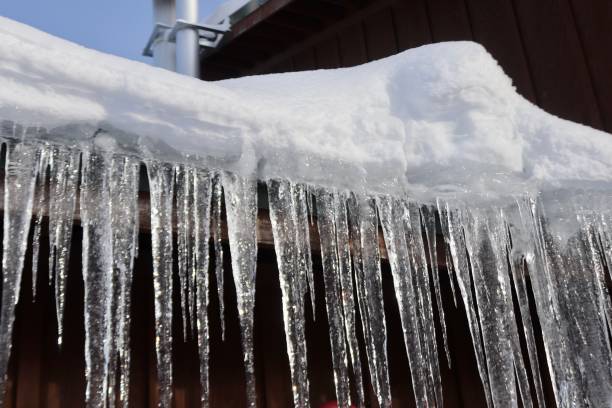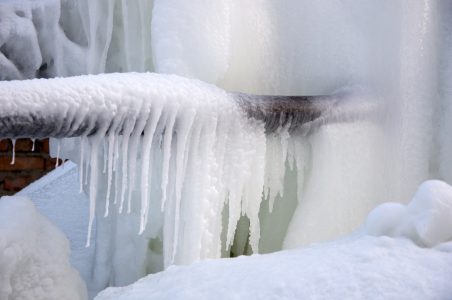Avoid Frozen Pipes in Cold Weather: Professional Strategies
Avoid Frozen Pipes in Cold Weather: Professional Strategies
Blog Article
In this article underneath you can get additional good additional info concerning Helpful Tips to Prevent Frozen Pipes this Winter.

Winter can ruin your pipes, especially by freezing pipes. Right here's just how to stop it from happening and what to do if it does.
Intro
As temperatures decline, the threat of frozen pipelines boosts, potentially resulting in expensive repair work and water damages. Recognizing how to avoid frozen pipelines is critical for homeowners in cold climates.
Comprehending Frozen Pipes
What triggers pipes to freeze?
Pipes freeze when exposed to temperature levels listed below 32 ° F (0 ° C) for expanded durations. As water inside the pipelines freezes, it increases, taxing the pipe walls and possibly creating them to burst.
Dangers and problems
Frozen pipes can cause supply of water disturbances, residential or commercial property damages, and expensive repair work. Ruptured pipelines can flood homes and create extensive structural damages.
Indicators of Frozen Pipes
Determining icy pipelines early can stop them from breaking.
How to identify frozen pipes
Search for reduced water flow from faucets, unusual odors or noises from pipes, and visible frost on exposed pipelines.
Avoidance Tips
Shielding prone pipes
Cover pipes in insulation sleeves or utilize warm tape to secure them from freezing temperatures. Concentrate on pipes in unheated or external locations of the home.
Home heating strategies
Maintain indoor spaces appropriately warmed, especially locations with pipes. Open up cupboard doors to permit warm air to flow around pipelines under sinks.
Safeguarding Exterior Plumbing
Yard hose pipes and outside taps
Separate and drain pipes garden pipes before wintertime. Mount frost-proof spigots or cover outside taps with insulated caps.
What to Do If Your Pipes Freeze
Immediate activities to take
If you believe frozen pipes, maintain taps open up to ease stress as the ice thaws. Make use of a hairdryer or towels taken in hot water to thaw pipes slowly.
Long-Term Solutions
Structural modifications
Think about rerouting pipelines far from outside walls or unheated areas. Add additional insulation to attics, basements, and crawl spaces.
Upgrading insulation
Invest in top quality insulation for pipes, attics, and wall surfaces. Correct insulation assists preserve constant temperatures and reduces the threat of icy pipes.
Conclusion
Preventing icy pipelines requires proactive steps and quick actions. By understanding the reasons, indications, and safety nets, house owners can secure their plumbing throughout cold weather.
5 Ways to Prevent Frozen Pipes
Drain Outdoor Faucets and Disconnect Hoses
First, close the shut-off valve that controls the flow of water in the pipe to your outdoor faucet. Then, head outside to disconnect and drain your hose and open the outdoor faucet to allow the water to completely drain out of the line. Turn off the faucet when done. Finally, head back to the shut-off valve and drain the remaining water inside the pipe into a bucket or container. Additionally, if you have a home irrigation system, you should consider hiring an expert to clear the system of water each year.
Insulate Pipes
One of the best and most cost-effective methods for preventing frozen water pipes is to wrap your pipes with insulation. This is especially important for areas in your home that aren’t exposed to heat, such as an attic. We suggest using foam sleeves, which can typically be found at your local hardware store.
Keep Heat Running at 65
Your pipes are located inside your walls, and the temperature there is much colder than the rest of the house. To prevent your pipes from freezing, The Insurance Information Institute suggests that you keep your home heated to at least 65 degrees, even when traveling. You may want to invest in smart devices that can keep an eye on the temperature in your home while you’re away.
Leave Water Dripping
Moving water — even a small trickle — can prevent ice from forming inside your pipes. When freezing temps are imminent, start a drip of water from all faucets that serve exposed pipes. Leaving a few faucets running will also help relieve pressure inside the pipes and help prevent a rupture if the water inside freezes.
Open Cupboard Doors
Warm your kitchen and bathroom pipes by opening cupboards and vanities. You should also leave your interior doors ajar to help warm air circulate evenly throughout your home.

Do you appreciate reading about How To Avoid Freezing Pipes? Post feedback down below. We'd be delighted to find out your ideas about this write up. We are looking forward that you come back again before long. Enjoyed reading our blog? Please share it. Help someone else find it. Kudos for being here. Return soon.
Schedule Your Service Report this page